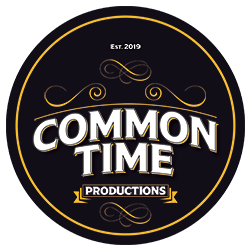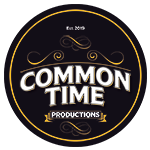Creating the perfect song begins with a profound understanding of the client’s vision. This initial step is crucial, as it sets the foundation for the entire creative process. The purpose of the song must be clearly defined—whether it’s meant for a personal occasion, a commercial project, or artistic expression. By identifying the client’s musical influences, a clearer picture of their preferences emerges, helping to shape the direction of the project. Establishing the emotional tone is equally important, as it guides the mood and atmosphere that the song will convey.
Initial Consultation and Pre-Production
The initial consultation is a pivotal moment in the client-songwriter relationship. Preparing for this meeting involves researching the client’s background, understanding their goals, and being ready to ask insightful questions. These questions should delve deep into the client’s desires, asking not only what they want but why they want it. Interpreting non-musical descriptions, such as imagery or stories the client shares, can often reveal the emotional core of the song they envision, translating abstract ideas into concrete musical elements.
Research and Inspiration

Once the vision is understood, working with clients to create a custom song involves immersing oneself in the client’s genre preferences. This involves listening to key artists and songs that align with their taste, exploring trends within that genre, and gathering musical references that can serve as a springboard for creativity. This research phase is not just about mimicking what exists but about finding unique ways to integrate these influences into something fresh and original.
Song Structure and Composition
With inspiration in hand, the structural elements of the song begin to take shape. Deciding on the song’s structure—be it a traditional verse-chorus form or something more experimental—sets the blueprint for the composition. The melody, often considered the soul of the song, must be carefully crafted to be both memorable and emotionally resonant. Weaving the lyrics with the music involves a delicate balance, ensuring that the words and melody complement each other, creating a cohesive piece that speaks to the listener.
Collaborative Brainstorming

Involving the client in the creative process through brainstorming sessions can be incredibly fruitful. This collaboration allows the client to feel invested in the project while also providing valuable input that can inspire new directions. However, it’s essential to balance this input with artistic integrity, ensuring that the song remains a professional work of art. Managing creative differences gracefully is key to maintaining a positive working relationship and ensuring the project moves forward smoothly.
Lyrics Writing Process
Translating the client’s ideas into lyrics is an art form. The lyrics must capture the essence of what the client wants to communicate, whether it’s a personal story, a brand message, or an emotional narrative. Crafting lyrics that resonate with listeners involves choosing words that are not only meaningful but also rhythmically and phonetically pleasing. Ensuring lyrical consistency and flow throughout the song helps maintain its coherence and impact.
Melody Creation

The melody is the bread and butter of the song, the element that listeners are most likely to remember. Understanding the role of melody in evoking emotion and setting the tone is crucial. Experimenting with different melodic ideas allows for creative exploration, and finding the right match to the client’s vision requires both intuition and technical skill. The melody must align with the client’s expectations while also standing out as a unique and captivating piece of music.
Arrangement and Instrumentation
Selecting the right instruments is pivotal in bringing the song to life. The arrangement should create a dynamic and engaging listening experience, with each instrument contributing to the overall sound. Considering the sonic palette—the combination of instruments, their tones, and how they interact—ensures that the song has a distinctive and polished sound. The arrangement should build and release tension, guiding the listener through the song’s emotional journey.
Production and Recording
The production and recording phase is where the song truly begins to take shape. Setting up the recording environment involves ensuring that all technical aspects are in place to capture the best sound possible. Directing the client’s performance during recording is an art, working with clients to create a custom song, requiring the ability to bring out their best while making them feel comfortable and confident. Layering and texturing the track with various sounds and effects add depth and richness, turning a simple composition into a full-fledged production.
Vocal Recording and Editing

The vocals are often the focal point of a song, and capturing the perfect vocal take is paramount. Coaching the client during recording helps them deliver a performance that is both technically sound and emotionally compelling. Once the recording is complete, editing the vocals for clarity, pitch, and timing ensures that they blend seamlessly with the rest of the track. The goal is to enhance the vocals while maintaining their natural expressiveness.
Mixing and Mastering
Mixing and mastering are the final steps in the production process, where the song is polished and ready for publication. Understanding the mixing process involves balancing all the elements of the song—vocals, instruments, effects—to create a cohesive sound. Tailoring the mix to the client’s preferences ensures that the final product aligns with their vision. Mastering, the final step, prepares the song for distribution across various platforms, ensuring it sounds great no matter where it’s played.
Client Feedback and Revisions
Presenting the first draft to the client is an exciting but nerve-wracking moment. Gathering constructive feedback is essential to understand what aspects of the song resonate with the client and what may need adjustment. Implementing revisions, whether they involve small tweaks or significant changes, is part of the collaborative process, which is crucial to working with clients to create a custom song, ensuring that the final product meets the client’s expectations.
Finalizing the Song

As the project nears completion, it’s crucial to ensure that every detail meets the client’s expectations. Preparing different mixes, such as instrumental versions or radio edits, may be necessary depending on the song’s intended use. Delivering the final product in a professional and timely manner leaves a lasting impression and opens the door for future collaborations.
Legal Considerations
Understanding the legal aspects of songwriting, such as ownership and rights, is crucial for both the client and the songwriter. Drafting clear contracts and agreements helps avoid misunderstandings and ensures that both parties are protected. Registering the song with performance rights organizations is a necessary step to safeguard the work and ensure proper compensation for its use.
Client Communication and Relationship Building
Clear and consistent communication throughout the project is essential for managing expectations and ensuring a smooth workflow. Maintaining a positive relationship with the client, even when challenges arise, can lead to long-term collaborations and referrals. Building trust and rapport is as important as the technical aspects of song creation.
Marketing and Promotion Strategies

Once the song is complete, advising the client on release strategies can help maximize its impact. Assisting with the creation of promotional materials, such as press releases or social media content, can further enhance the song’s visibility. Leveraging social media for promotion allows the client to connect with their audience and build anticipation for the release.
Conclusion
The journey of creating the perfect song is a collaborative and dynamic process that requires creativity, communication, and technical skill. By working closely with clients, understanding their vision, and navigating the challenges of the creative process, songwriters can craft music that resonates deeply and stands the test of time.
If you would like to learn more about mixing music and using plugins, check out this great blog all about using Waves Plugins. These plugins will work with any DAW you might be using as well!
About The Author

Mary Nance
Mary is a multi-talented small business entrepreneur and creative artist, specializing in teaching, content creation, and custom songwriting. With a passion for empowering aspiring content creators, she offers lessons in Unreal Engine, music, and other content creation tools through her social media communities of CommonTime Productions.



Leave A Comment